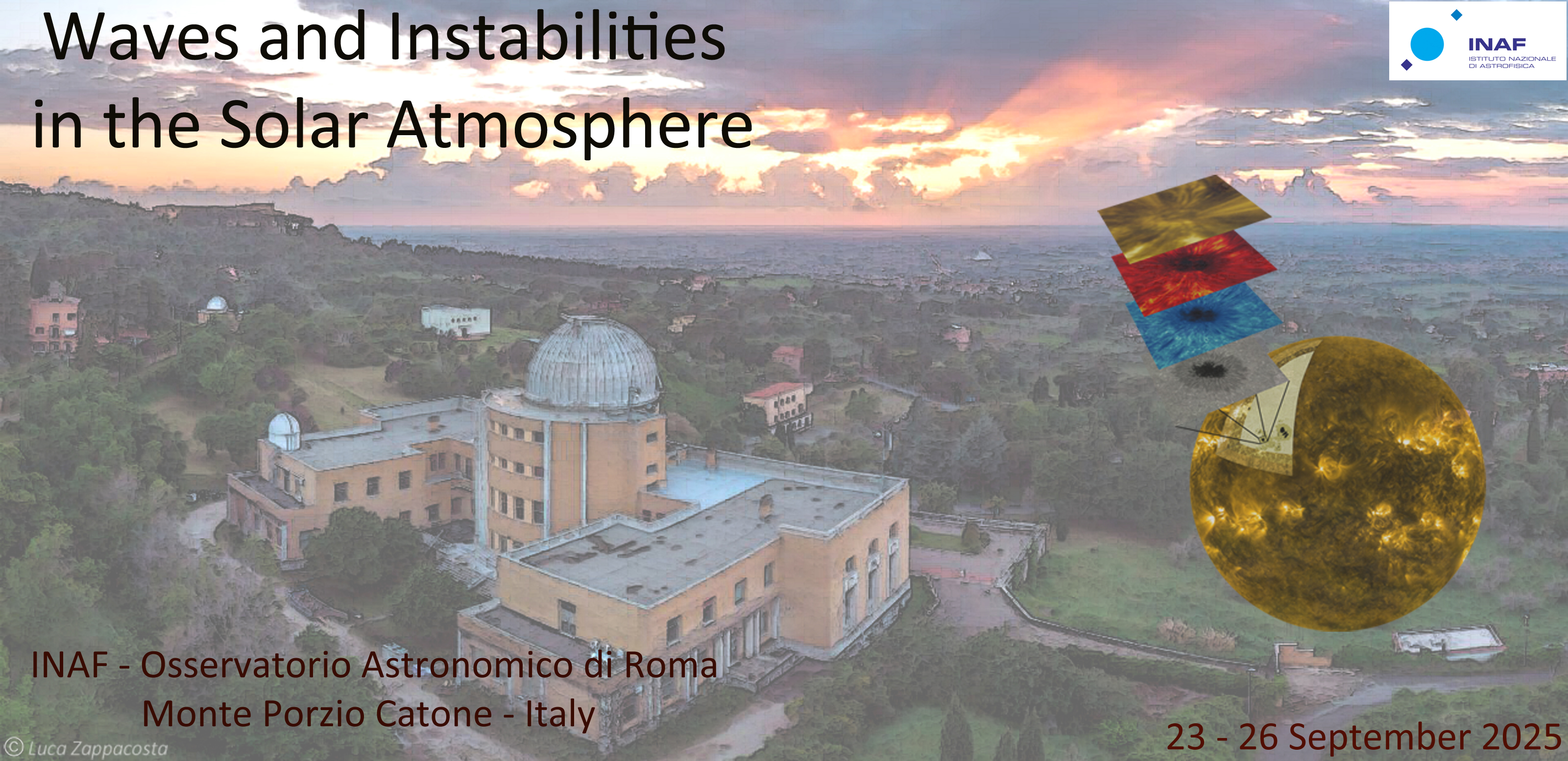Conveners
Invited Talk: Shining light on the formation process of cool plasma
- Veronika Jerčić (Heliophysics Science Division, NASA Goddard Space Flight Center, Greenbelt, MD 20771, USA)
Invited Talk: Decayless kink oscillations in solar coronal loops
- Sihui Zhong (University of Exeter, UK)
Invited Talk: Frequency stability of solar acoustic oscillations near the photospheric cut-off
- Dmitrii Kolotkov (University of Warwick, UK)
Invited Talk: Baroclinic instabilities in Alfvénic modes
- Roberto Soler (University of the Balearic Islands)
Invited Talk: Mixing-induced cooling in the Kelvin–Helmholtz instability
- Ben Snow (University of Exeter)
Invited Talk: Observing the evolution of the Sun’s global coronal magnetic field over 8 months
- Zihao Yang (NCAR/HAO)
Invited Talk: Vortex Flows and associated Waves in the Solar Atmosphere
- Nitin Yadav
Invited Talk: Vortical Dynamics in the Solar Atmosphere: Mechanisms of Wave Generation and Energy Transport
- Suzana S. A. Silva (The University of Sheffield)
Invited Talk: Coronal Density Fluctuations in the Middle Corona Observed by Metis
- Vincenzo Andretta (Istituto Nazionale di Astrofisica (INAF))
Invited Talk: Coronal kink oscillations and photospheric driving
- Nicolas Poirier (IRAP)
Invited Talk: Tracing the Flow of Energy in Coronal Hole Solar Wind
- Yeimy Rivera (Center for Astrophysics | Harvard & Smithsonian)
Invited Talk: Revisiting Umbral Flashes: From Chromospheric Resonant Cavities to Intriguing Downflows in a Pore
- Tobias Felipe (Instituto de Astrofísica de Canarias)
Prominences are cold and dense structures in the hot and tenuous solar corona and are ubiquitous on the Sun. They possess thermodynamic conditions that vary from chromospheric internally to those of the corona that surrounds them. Even though predominantly in the corona, they connect all the layers in the solar atmosphere and play an important role in the energy transfer between the different...
Coronal waves have been intensively studied due to their potential role in coronal heating and their application in plasma diagnostics. One particularly promising candidate is the recently discovered low-amplitude decayless kink oscillations, which are ubiquitous in the solar corona. Their undamped nature suggests the presence of a continuous energy input counteracts dissipation, although the...
Acoustic waves below the cut-off frequency reflect at the photosphere, forming standing p-modes in sub-photospheric cavities. Above the cut-off, waves propagate as pseudomodes. Recent observations show pseudomode frequencies vary in anti-phase with the 11-year solar cycle, which is not yet fully explained. Using the Klein-Gordon equation with a piecewise acoustic potential, we study the...
The nonlinear evolution of Alfvénic modes (torsional, kink, or fluting modes) in magnetic flux tubes is strongly affected by the Kelvin-Helmholtz (KH) instability, which arises from shear flows at the tube boundary. In this study, we show that baroclinic instabilities of Rayleigh-Taylor (RT) type can also emerge at locations in the boundary where the plasma acceleration is directed normal to...
Abstract: Cool (≈10^4 K), dense material permeates the hot (≈10^6 K), tenuous solar corona in form of coronal condensations, for example prominences and coronal rain. As the solar atmosphere evolves, turbulence can drive mixing between the condensations and the surrounding corona. Whilst both the corona and the condensations are relatively thermally stable, in the sense that radiative losses...
The magnetic field in the Sun’s corona stores energy that can be released to heat plasma and drive solar eruptions. Measurements of the global coronal magnetic field have been limited to several snapshots. In this work, we present observations, using the Upgraded Coronal Multi-channel Polarimeter, that provide 114 magnetograms of the global corona above the solar limb spanning ~8 months. We...
Solar vortex flows are rotating plasma structures widely detected in direct solar observations as well as comprehensive numerical simulations. We investigate and compare vortex dynamics in three magnetic regions, viz., Quiet Sun, Weak Plage, and Strong Plage, using realistic three-dimensional simulations from a comprehensive radiation-magnetohydrodynamics (MHD) code, MURaM. We find that the...
The solar atmosphere is a dynamically turbulent and magnetically organised environment, where waves and flows are central to energy transport. Among the features shaping this complexity are solar vortices—localised, rotating structures that span multiple spatial and temporal scales. This talk focuses on how vortices influence wave propagation and energy redistribution, particularly in the...
The Metis coronagraph on board Solar Orbiter allows observations of the middle solar corona at spatial resolutions that can rival or surpass those attained by other operating coronagraphs over a field of view going from 1.6 to 3.4 degrees, corresponding to the range 1.7 - 3.6 solar radii at perihelion. The instrument is also capable to observe the corona at high temporal cadences - down to 20...
Transverse kink oscillations have long been observed in the corona and in closed magnetic loops especially. Although their properties are quite well-known now it is still rather unclear how they manage to sustain themselves over quite a long duration, with open questions regarding their driver and excitation mechanism. In this talk I will give an overview over the different ideas/theories that...
The 2024 total solar eclipse over North America provided a multi-perspective view of the Sun and solar wind through combined ground (DKIST, Mauna Loa Solar Observatory UCoMP and K-Cor) and space (Parker Solar Probe, Solar Orbiter, LASCO/C2, Hinode/EIS) -based remote and in situ observations. Through a multi-mission coordinated effort, we examine near-contemporaneous and multi-wavelength...
Solar active regions are rich in dynamic phenomena driven by wave propagation. Among the most striking are umbral flashes, sudden brightenings observed in the chromospheric core of some spectral lines. Traditionally attributed to upward-propagating shock waves, this interpretation has been recently questioned by observations of downflowing umbral flashes and the identification of resonant...

